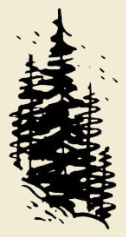By Dede Terns Thorpe, Town of Hunter Historian
I’ve shared related articles before, but Manitou seems to be found frequently in different variants and is always a fun and exciting read. Here’s a little bit more.
Unfortunately, the following paper was unsigned… “According to Indian traditions, there was a kind of Manitou or Spirit, who took a mischievous pleasure in wreaking evils and vexations upon the red man. Sometimes he would assume the form of a bear, a panther, or a deer, lead the bewildered hunter a weary chase through the tangled forest and ragged rocks, and then spring off with a loud Ho Ho, leaving him aghast on the brink of a beetling precipice or raging torrent.
The Indians considered the Catskills the abode of spirits, who influenced the weather, and sending good or bad hunting seasons. They were ruled by an old squaw spirit, said to be their mother. She had charge of the doors of day and night to open and shut them at the proper hour. She hung the new moons in the skies and cut the old ones into stars.”
In 2016, Dr. Robert Titus, a renowned geologist and local resident, wrote about Henry Hudson’s 1609 exploration and discovery of an important landmark, the Hudson River. Titus said Hudson and his crew must have wondered about those mountains as they sailed past them. Dr. Titus noted, “The Catskill Front, or if you like, the Wall of Manitou, is very roughly the Algonquian words for the Wall of God. It is a very striking landscape feature, stretching about ten miles long and extending from Overlook Mt., in the south, to North Point in the north. It is broken twice by sizable cloves. The biggest is Kaaterskill clove; the other is Plattekill clove, and that is only a bit smaller.”
Titus wrote: “To watch as thunderstorms pass over the Catskills is a grand experience. I think that they must have invented thunderstorms just for the Catskills. On clear dry days at Olana (the home built by Artist Edwin Church), the image of the mountains seems to expand; I think the dry air actually magnifies the view. It is always a wonderful panorama at Olana. Church and his family enjoyed it for decades; I envy them that.”
Olana was constructed in 1872 as the home for Edwin Church and his wife. Church was a student of artist Thomas Cole who described Church as “the finest eye for drawing in the world.” Olana had been an old farm, a site where Church and Cole often painted together. Olana is a New York State historic house and museum in Greenport, near Hudson.
Wikipedia tells us that in some Algonquian traditions, Gitcher Manitou refers to a “great spirit” or supreme being. Some Christian groups adopted the word to refer to God. It tells us, “Algonquian religion acknowledges medicine men, who used manitou to see the future, change the weather, and heal illness.” Illness was believed to be caused by magic and spirits.
Just as the name Rip Van Winkle is shared among many businesses in Greene County, so has the name Manitou. The Catskill Escarpment, the Wall of Manitou, is a name proudly shared with numerous other sites in North America. Thanks for reading, and have a great rest of your summer.
